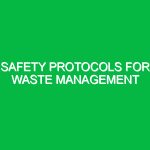Workplace safety risk factors are critical elements that can lead to injury, illness, or even fatalities in various work environments. In the Health, Safety, and Environment (HSE) domain, recognizing and managing these risk factors is paramount to ensuring a safe and productive workplace. The significance of workplace safety extends beyond just compliance with regulations; it fosters a culture of safety that protects employees, reduces downtime, and enhances overall operational efficiency. In this article, we will delve into the various workplace safety risk factors, the hazards they pose, and the best practices to mitigate these risks effectively.
Defining Workplace Safety Risk Factors
Workplace safety risk factors refer to any condition or situation that increases the likelihood of harm to employees, equipment, or the environment. These factors can range from physical hazards, such as slippery floors, to ergonomic issues like repetitive strain injuries. In essence, any element that can potentially disrupt employee safety falls under this category. The relevance of understanding these risk factors in the HSE context cannot be overstated; it is the foundation upon which effective safety management systems are built.
Identifying Workplace Safety Risk Factors
Addressing workplace safety risk factors begins with identifying potential hazards. Not all risks are immediately apparent, and some may develop over time due to changes in the work environment or processes. Below are some common categories of hazards associated with workplace safety risk factors:
1. Physical Hazards
Physical hazards are the most visible workplace safety risk factors. These include:
- Slips, Trips, and Falls: Wet floors, uneven surfaces, and clutter can lead to serious injuries. For instance, a construction site with unmarked wet areas poses a significant risk to workers.
- Machinery Hazards: Inadequately maintained or improperly used machinery can result in accidents. An employee operating a faulty piece of equipment may suffer serious injury without proper training and safety measures.
- Electrical Hazards: Exposed wiring or overloaded circuits can lead to electrocution or fires. Employees may not realize the dangers until it’s too late.
2. Chemical Hazards
Exposure to hazardous substances is a significant workplace safety risk factor. Chemicals can be found in various industries, from manufacturing to healthcare. Risks include:
- Toxic Exposure: Inhalation of harmful fumes or skin contact with corrosive substances can cause long-term health issues. A famous case involves a factory worker who developed respiratory problems due to consistent exposure to toxic chemicals without proper protective gear.
- Flammability: Chemicals that are flammable can lead to explosions if not stored or handled correctly. An incident in a lab, where flammable liquids were improperly stored, serves as a stark reminder of this risk.
3. Ergonomic Hazards
Ergonomic issues arise from the design of the workplace and can lead to repetitive strain injuries. Such risks include:
- Poorly Designed Workstations: Employees who spend long hours at a desk with inadequate chair support may suffer from back pain or carpal tunnel syndrome.
- Repetitive Motions: Factory workers performing the same task repeatedly can develop chronic injuries. A personal anecdote illustrates this; a friend of mine, a factory worker, experienced debilitating wrist pain after years of repetitive tasks without proper ergonomic assessments.
4. Psychological Hazards
Mental well-being is increasingly recognized as a crucial aspect of workplace safety. Psychological hazards can include:
- Workplace Bullying: Harassment can lead to mental health issues, reducing employee morale and productivity.
- Stress and Burnout: High-pressure environments can lead to chronic stress, resulting in absenteeism and decreased work quality.
Safety Precautions and Best Practices
Understanding the risk factors is only the first step; implementing effective safety precautions is where the real impact lies. Here are some actionable best practices to mitigate workplace safety risk factors:
1. Conduct Regular Risk Assessments
Regularly assessing the workplace for potential hazards is essential. This can be done through:
- Inspections: Regular safety inspections can identify hazards before they result in accidents.
- Employee Feedback: Employees often know best about the risks they face. Encouraging reporting can help identify unseen dangers.
2. Implement Safety Training Programs
Comprehensive safety training is vital. This includes:
- New Employee Orientation: New hires should undergo training to understand workplace hazards and safety protocols.
- Ongoing Training: Continuous training helps keep safety practices top-of-mind for all employees. For example, annual refresher courses on hazardous material handling are crucial in environments with chemical exposure.
3. Promote a Safety Culture
A culture of safety encourages employees to prioritize safety over productivity. This can be achieved by:
- Leadership Commitment: Management should actively participate in safety initiatives, demonstrating their importance.
- Incentives for Safe Behavior: Rewarding employees for safe practices can motivate a commitment to safety.
4. Utilize Personal Protective Equipment (PPE)
Providing appropriate PPE is essential for mitigating risks. This includes:
- Headgear, Gloves, and Eyewear: Depending on the job, different types of PPE are necessary. For example, construction workers should always wear hard hats to protect against head injuries.
- Regular Maintenance and Replacement: Ensuring that PPE is in good condition and replaced when necessary is critical.
5. Design Ergonomically Sound Workspaces
Investing in ergonomic solutions can significantly reduce risks associated with repetitive strain injuries. Consider:
- Adjustable Workstations: Desks and chairs should be adjustable to accommodate different body types and preferences.
- Breaks and Rotations: Encouraging employees to take breaks and rotate tasks can reduce the risk of repetitive strain injuries.
Regulations and Standards Governing Workplace Safety
Numerous regulations govern workplace safety risk factors. Familiarity with these standards is crucial for compliance and effective safety management:
- Occupational Safety and Health Administration (OSHA): OSHA sets and enforces standards to ensure safe working conditions in the United States. Employers must comply with these regulations to protect their workforce.
- National Institute for Occupational Safety and Health (NIOSH): NIOSH conducts research and makes recommendations for preventing workplace injuries and illnesses.
- ISO 45001: This international standard outlines requirements for occupational health and safety management systems, helping organizations improve employee safety and reduce workplace risks.
Conclusion
Workplace safety risk factors are diverse and can significantly impact the well-being of employees and the overall productivity of an organization. By recognizing these risks and implementing effective safety measures, businesses can create a culture of safety that not only complies with regulations but also demonstrates a commitment to employee health and well-being. Continuous training, risk assessments, and a strong emphasis on safety culture are paramount in addressing the challenges posed by these risk factors. As we move forward, fostering a safe work environment should be at the forefront of every organization’s priorities, ensuring that safety is not just a checkbox but a core value embedded in the organizational ethos.


